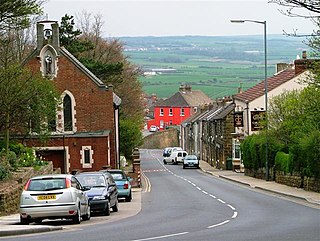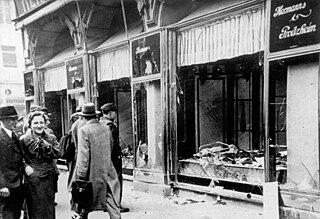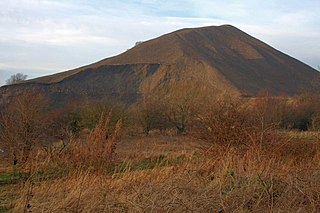Related Research Articles

Sir Michael Kemp Tippett was an English composer who rose to prominence during and immediately after the Second World War. In his lifetime he was sometimes ranked with his contemporary Benjamin Britten as one of the leading British composers of the 20th century. Among his best-known works are the oratorio A Child of Our Time, the orchestral Fantasia Concertante on a Theme of Corelli, and the opera The Midsummer Marriage.

Eston is an area of Redcar and Cleveland in North Yorkshire, England. The local authority ward covering the area had a population of 7,005 at the 2011 census. It is part of Greater Eston, which includes the outlying settlements of Grangetown, Normanby, South Bank, Teesville and part of Ormesby.

Middlesbrough is a town in the Middlesbrough unitary authority borough of North Yorkshire, England. The town lies near the mouth of the River Tees and north of the North York Moors National Park. The built-up area had a population of 148,215 at the 2021 UK census. It is the largest town of the wider Teesside area, which had a population of 376,633 in 2011.

Teesside is a built-up area around the River Tees in North East England, split between County Durham and North Yorkshire. The area contains the towns of Middlesbrough, Stockton-on-Tees, Billingham, Redcar, Thornaby-on-Tees, and Ingleby Barwick. Teesside's economy was once dominated by heavy manufacturing until deindustrialisation in the latter half of the 20th century. Chemical production continues to contribute significantly to Teesside's economy.

County Durham, officially simply Durham (/ˈdʌrəm/), is a ceremonial county in North East England. The county borders Northumberland and Tyne and Wear to the north, the North Sea to the east, North Yorkshire to the south, and Cumbria to the west. The largest settlement is Darlington, and the county town is the city of Durham.

Spennymoor is a town and civil parish in County Durham, England. It is south of the River Wear and is 7 mi (11 km) south of Durham. The civil parish includes the villages of Kirk Merrington, Middlestone Moor, Byers Green and Tudhoe.

Teesville is an area in the borough of Redcar and Cleveland, North Yorkshire, England. A ward covering the area had a population of 6,517 at the 2011 census. It is part of Greater Eston, which includes the area and the settlements of Eston, Normanby, South Bank, Teesville and part of Ormesby.

Brotton is a village in the civil parish of Skelton and Brotton, in the Redcar and Cleveland district, in the ceremonial county of North Yorkshire, England It is situated approximately 2.5 miles (4 km) south-east of Saltburn-by-the-Sea, 9 miles from Redcar, 12 miles (19 km) east of Middlesbrough and 14 miles (23 km) north-west of Whitby.

Grangetown is an area in the borough of Redcar and Cleveland, North Yorkshire, England. The area is 3 miles (4.8 km) east of Middlesbrough and 4 miles (6.4 km) from south-west of Redcar.

A Child of Our Time is a secular oratorio by the British composer Michael Tippett (1905–1998), who also wrote the libretto. Composed between 1939 and 1941, it was first performed at the Adelphi Theatre, London, on 19 March 1944. The work was inspired by events that profoundly affected Tippett: the assassination of a German diplomat by a young Jewish refugee in 1938, and the Nazi government's reaction to the assassination which was in the form of a violent pogrom against Germany's Jewish population: Kristallnacht. Tippett's oratorio deals with these incidents in the context of the experiences of all oppressed people, and it carries a strongly pacifistic message of ultimate understanding and reconciliation. The text's recurrent themes of shadow and light reflect the Jungian psychoanalysis which Tippett underwent in the years immediately before he wrote the work.

The South Durham and Lancashire Union Railway (SD&LUR) built a railway line linking the Stockton and Darlington Railway near Bishop Auckland with the Lancaster and Carlisle Railway at Tebay, via Barnard Castle, Stainmore Summit and Kirkby Stephen. The line opened in 1861 and became known as the Stainmore Line.
Robin Hood is a ballad opera by Michael Tippett based on the legend of Robin Hood. Composed in 1934, the score remains unpublished. However, Tippett later used an expanded version of the overture as the finale to his 1948 Suite in D major .

Great Broughton is a village in the Great and Little Broughton civil parish of the Hambleton district of North Yorkshire in northern England.
Eston Nab is a rocky outcrop hill in the town of Eston, Redcar and Cleveland, North Yorkshire, England.

The Cleveland Ironstone Formation is a sequence of marine ironstone seams interbedded with shale and siltstone units which collectively form a part of the Lower Jurassic System of rocks underlying Cleveland in North Yorkshire. Exploitation of the ironstone seams became a major driving force behind the industrialisation of the Teesside district during the mid- to late-1800s.

Grinkle Mine, was an ironstone mine working the main Cleveland Seam near to Roxby in North Yorkshire, England. Initially, the ironstone was mined specifically for the furnaces at the Palmer Shipbuilders in Jarrow on the River Tyne, but later, the mine became independent of Palmers. To enable the output from the mine to be exported, a 3-mile (4.8 km) narrow-gauge tramway was constructed that ran across three viaducts and through two tunnels to the harbour of Port Mulgrave, where ships would take the ore directly to Tyneside.

Ironstone mining in Cleveland and North Yorkshire occurred on a sizeable scale from the 1830s to the 1960s in present day eastern parts of North Yorkshire but has been recorded as far back as Roman times in mostly a small-scale and intended for local use. This Cleveland is not to be confused with a smaller area covered by the county of Cleveland from 1974-96.
Wilfred Florestan Franks (1908–2003) was a British artist, designer, sculptor, dancer and actor. He married Daphne Rudd in 1951
Ruth Pennyman was an English artist, designer, community organiser and theatrical producer. She was the wife of aristocratic land-owner Major James Pennyman of Ormesby Hall in Middlesbrough.

Hunt Cliff is a sea cliff or promontory, located between Saltburn and Skinningrove, in Redcar and Cleveland, on the Yorkshire Coast in England. Whilst Hunt Cliff is not as high as the nearby cliffs at Boulby, the view of it from Saltburn has been described as "very striking". Historically, the cliff has had many uses, being a signal station for the Romans, a place to mine ironstone, and a radar station during the Second World War. The Cleveland Way long-distance path traverses the cliff edge.
References
- ↑ Chase, Malcolm; Whyman, Mark (1991). Heartbreak Hill. A Response to Unemployment in East Cleveland in the 1930s. Cleveland County Council & Langbaurgh-on-Tees Borough Council. pp. 5–7. ISBN 0 904784 20 7.
- ↑ McKie, David (2011). Bright Particular Stars: A Gallery of Glorious British Eccentrics. London: Atlantic Books. pp. 265–266. ISBN 978 184887248 6.
- ↑ Kemp, Ian (1984). Tippett The Composer and His Music. Oxford: Oxford University Press. p. 26. ISBN 0 19 282017 6.
- ↑ Chase, Malcolm; Whyman, Mark (1991). Heartbreak Hill. A Response to Unemployment in East Cleveland in the 1930s. Cleveland County Council & Langbaurgh-on-Tees Borough Council. p. 21. ISBN 0904784207.
- ↑ Gilgan, Danyel (18 July 2020). "The extraordinary artistic camps for unemployed ironstone miners". The Northern Echo. Retrieved 27 December 2022.
- ↑ Soden, Oliver (2019). Michael Tippett The Biography. London: Weidenfeld & Nicolson. pp. 142–143. ISBN 978 1 4746 0602 8.
- ↑ Powers, Alan (2019). Bauhuas Goes West. Modern Art And Design in Britain And America. London: Thames & Hudson. pp. 186–187. ISBN 978-0-500-51992-9.